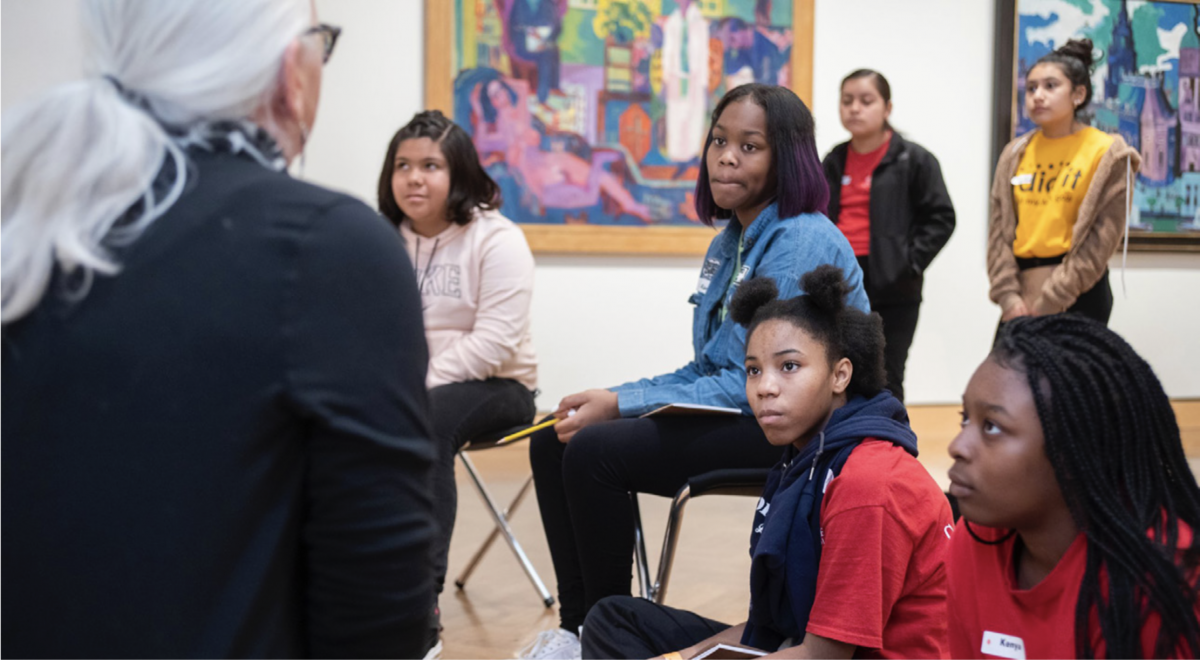
Art is Perspective
This summer, Mia held its first “empathy tours.” Designed by
the museum’s Center for Empathy and the Visual Arts (CEVA), the tours may seem like any other school visit: students pass from one gallery to the next, study artworks, and discuss them. But there are key differences.
“How do you think she’s feeling?” a guide asks a group of fifth-graders contemplating the museum’s beloved Nigerian sculpture of a woman’s head. “She looks disappointed,” one student responds. “She looks chill,” another offers.
On empathy tours, visitors are encouraged to share their own stories and seek their own meaning in the art. To enable this, the tours are longer than average and the itinerary is flexible. Adult empathy tours have begun as well. But it’s not just visitors who have benefited.
This spring, the center convened artists, scholars, and museum staff from Mia and elsewhere for an Empathy Lab—three days of exploring new ways to bring empathy into museums. One result: labels for films in the exhibition “Mapping Black Identities” quote the artists. Behind every work of art, after all, is the artist’s experience— sometimes lost in the desire to explain or interpret.
“How do we activate a space of empathy through these personal connections?” asks Jeanine Pollard, CEVA’s Research and Project Manager. “That’s the question we need to address so that all visitors—not only those whose identity is reflected in an artwork— feel welcome.”
Past Stories
Art is Perspective 2018
Andrea Pierre and her young daughters had a touchstone at Mia, a small doll of an African-American maid who sparked conversations about race and history and opportunity. And then they didn’t.

